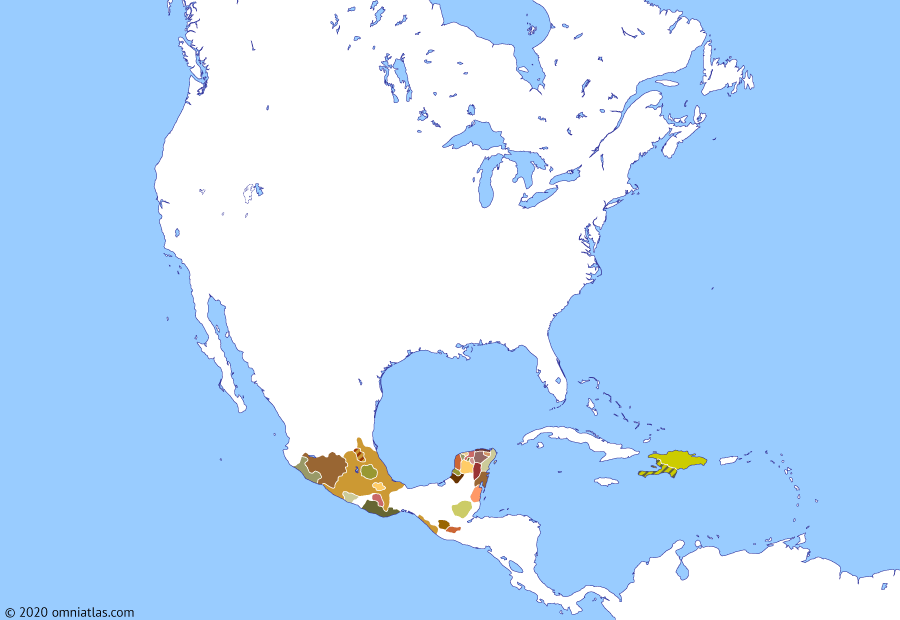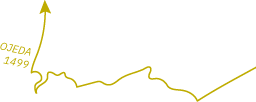North America 1500: Fall of Columbus
23 August 1500
23 Aug 1500
Fall of Columbus
12 Oct 1492 Arrival of Columbus
26 Dec 1492 First contacts
6 Jan 1494 Columbus’ second voyage
4 Aug 1496 Colony of Santo Domingo
24 Jun 1497 John Cabot’s expeditions
23 Aug 1500 Fall of Columbus
7 Jan 1503 First Spanish attempts on the Mainland
8 Aug 1508 Colonization of Puerto Rico
15 Aug 1511 Spanish expansion in the Caribbean
Distrusting Columbus’ claimed primacy in the New World, the Spanish monarchs began supporting the voyages of other explorers—beginning with Alonso de Ojeda and Amerigo Vespucci in 1499. At about the same time, responding to complaints about Columbus’ cruelty to settlers and natives alike, they appointed the knight Francisco de Bobadilla to as Governor of the Indies in his stead. Arriving in Santo Domingo in August 1500, Bobadilla found Columbus guilty of the charges and sent him back to Spain in chains. Although he was soon pardoned and allowed to return as an explorer in 1502, Columbus would never hold power again.


